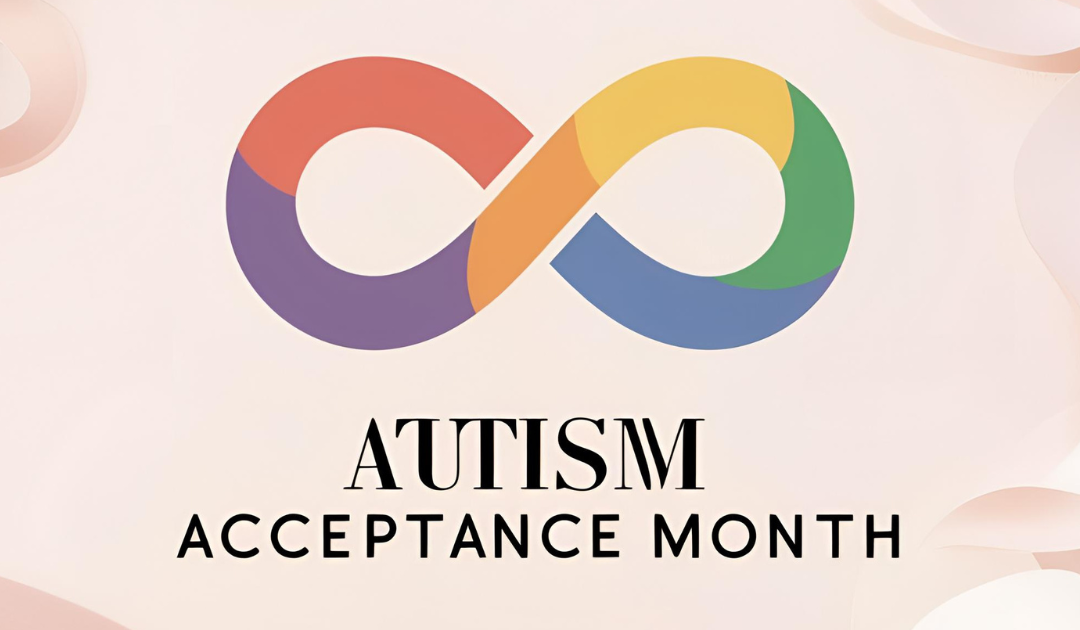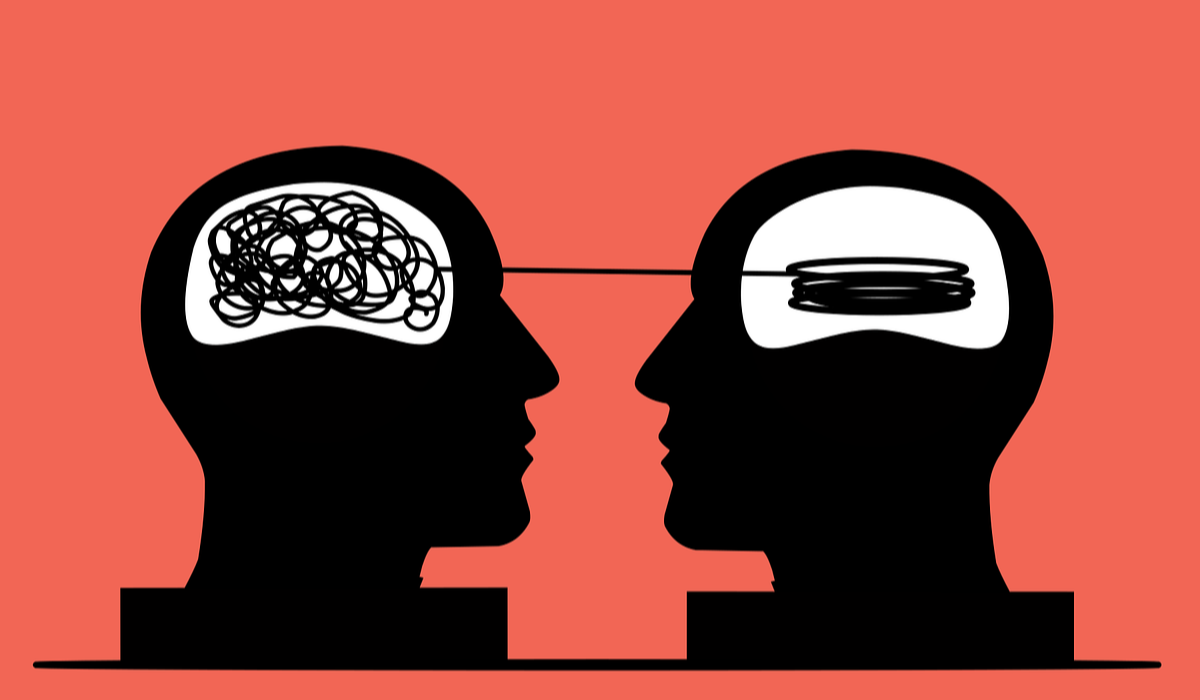Beyond Exhaustion: Autistic Burnout
I have been noticing a pattern lately (hello, Whitney's Autism), both in terms of things I'm seeing in the online spaces I'm in and also in the...
8 min read
).png) Whitney Storey, MS, LPC
:
Apr 2, 2025 12:55:02 PM
Whitney Storey, MS, LPC
:
Apr 2, 2025 12:55:02 PM

April 2nd is recognized as World Autism Awareness Day (or World Autism Acceptance Day, but more on that later), and typically my social media feeds are full of friends, family members, and folks from the community using the puzzle piece symbol and lighting it up blue. This recognition of Autism is amazing, and it warms my heart to know how far we've come in terms of awareness and acceptance of Autism. What I would love to see next, though, is a continued commitment from allies (individuals, groups, and organizations) in learning more about Autism and putting the voice of actually Autistic people in the forefront. What most Autistic people will tell you is that the puzzle piece symbol and the "light it up blue" call to action are incredibly problematic, ableist, not reflective of the Autistic experience, and not neurodiversity-affirming.
Before diving into the history and current view of the puzzle piece symbol, it's important to note that there are Autistic people who identify with the puzzle piece. The Autistic community is not a monolith - and this is a completely separate blog for another day. In recent years, though, Autistic people have been voicing their own thoughts, feelings, and preferences in terms of the way they experience the world, how the world experiences them, and what they would prefer advocacy look like. It's this network of Autists self-advocating that should be in the forefront of the conversations around Autism and what acceptance and awareness should look like (for more on this shift, check out the aptly named Autism Self-Advocacy Network).
-1.png?width=90&height=90&name=Untitled%20design%20(3)-1.png) The original puzzle piece logo was designed for the National Autistic Society in London in the 1960s and featured a crying child inside of a green and black puzzle piece. The designer, Gerald Gasson, was the parent of an Autistic child and was meant to represent Autism as "a puzzling and mysterious condition." Gasson was one of a group of parents in London who were concerned that their children were being rejected by the community and neglected by medical professionals. This group of parents then formed the National Autistic Society in London as a way to bring attention back to treating their children, even if up until that time many in the medical world considered them to be incurable and a "lost cause." In 1963, Gasson designed the puzzle piece image and the group adopted it as their logo. For a more detailed look at the history of this organization, you can read here.
The original puzzle piece logo was designed for the National Autistic Society in London in the 1960s and featured a crying child inside of a green and black puzzle piece. The designer, Gerald Gasson, was the parent of an Autistic child and was meant to represent Autism as "a puzzling and mysterious condition." Gasson was one of a group of parents in London who were concerned that their children were being rejected by the community and neglected by medical professionals. This group of parents then formed the National Autistic Society in London as a way to bring attention back to treating their children, even if up until that time many in the medical world considered them to be incurable and a "lost cause." In 1963, Gasson designed the puzzle piece image and the group adopted it as their logo. For a more detailed look at the history of this organization, you can read here.
There's a lot to unpack here. First, the crying child was chosen to highlight the notion that Autism ruined childhood in some way. This idea came not from Autistic children or adults, who absolutely existed then and now, but from family members (usually parents) who perceived their Autistic child as one that was not compatible with childhood norms because of their Autism. Autism was viewed as a condition that needed treatment and curing - and it still is viewed this way in many circles. Viewing Autism as a condition in need of treatment or curing has also led to decades of Autistic people being forced into treatments that many consider to be abusive. The crying child also reinforces the idea that adults cannot be Autistic, and that Autistic people in general are either children or child-like. Many Autists have described that associating Autism with a child and a toy lead to further infantilization of Autism and Autistic people, further contributing to the ableist ways in which they are treated (or not treated at all).
 In 1999, the Autism Society of America adopted the puzzle piece with a slight twist - an awareness ribbon featuring a puzzle design in primary colors. Shifting to the ribbon was a way to highlight hope among Autists and their families - hope that one day Autistic people would be able to live in and interact with the world on their own terms, even if this concept was still guided by the idea of identifying the cause of Autism, treating Autism, and a goal of eventually curing Autism. Autism was a condition in need of treatment and cure - and usually this involved Applied Behavioral Analysis as a technique to help an Autist become or at least appear to be more neurotypical (this is also a whole separate blog in need of writing).
In 1999, the Autism Society of America adopted the puzzle piece with a slight twist - an awareness ribbon featuring a puzzle design in primary colors. Shifting to the ribbon was a way to highlight hope among Autists and their families - hope that one day Autistic people would be able to live in and interact with the world on their own terms, even if this concept was still guided by the idea of identifying the cause of Autism, treating Autism, and a goal of eventually curing Autism. Autism was a condition in need of treatment and cure - and usually this involved Applied Behavioral Analysis as a technique to help an Autist become or at least appear to be more neurotypical (this is also a whole separate blog in need of writing).
The puzzle had shifted in meaning by this time, with a focus on Autism as a wide, complex spectrum - with each person having their own unique Autistic neurotype, much like a puzzle being complete with the inclusion of every piece. Still Autists and their allies spoke up in opposition to this symbol, reiterating that they and their neurotype do not need to be "figured out" - especially as a means to cure Autism. While the crying child has been removed, the use of primary colors continued the false notion that Autism is a condition of children.
-4.png?width=90&height=90&name=Untitled%20design%20(5)-4.png) Since that time, the Autism Society of America has rebranded, with the inclusion of Autistic people involved in the process, and has switched to using what they describe as intertwined threads, which they describe being "symbol for community, strength, equity, diversity, pathways and, of course, connection. The single threads of the Autism Society brand mark represent individuality and unique experiences that are simultaneously interconnected and woven to the greater community...Additionally, the individual threads that make up the pattern, when working together or when “woven” together, create a stronger, more resilient “fabric” of people working together for the Autism community" (find out more at their website here). The different colors of each string represents a group in the Autism community, with all of them coming together and working together for the benefit of all. As our understanding of Autism continues to grow and more voices become part of the conversation, our conceptualization of Autism will of course guide the symbolism used to represent it. For now, this is considered by most Autists to be a good-enough choice and definitely a better-than choice as compared to the puzzle piece.
Since that time, the Autism Society of America has rebranded, with the inclusion of Autistic people involved in the process, and has switched to using what they describe as intertwined threads, which they describe being "symbol for community, strength, equity, diversity, pathways and, of course, connection. The single threads of the Autism Society brand mark represent individuality and unique experiences that are simultaneously interconnected and woven to the greater community...Additionally, the individual threads that make up the pattern, when working together or when “woven” together, create a stronger, more resilient “fabric” of people working together for the Autism community" (find out more at their website here). The different colors of each string represents a group in the Autism community, with all of them coming together and working together for the benefit of all. As our understanding of Autism continues to grow and more voices become part of the conversation, our conceptualization of Autism will of course guide the symbolism used to represent it. For now, this is considered by most Autists to be a good-enough choice and definitely a better-than choice as compared to the puzzle piece.
-4.png?width=90&height=90&name=Untitled%20design%20(4)-4.png) The Autism Speaks organization was founded in 2005, and their unique take on the symbol was the color scheme, in that the blue in the top of the piece melts down into a spectrum of pinks, purples, and oranges. They explain that the spectrum of colors is representative of the "spectrum of perspectives and experiences" of Autistic people. They do note that they are aware of the controversy surrounding the puzzle piece symbol, and despite that, have continued to use it. In a video posted to their website, their Director of Social Media and self-advocate (i.e., is Autistic herself) Eileen Lamb shares that the puzzle piece used by Autism Speaks is not a reflection of the idea that Autists are missing something or broken in some way, but that when it was adopted in the U.S. in 1999, "there was an Autistic person there." It's unclear to me how having an Autistic person in the room in 1999 negates all of the continued voices of Autists today who say that the puzzle piece is offensive. You can watch that video and learn more about Autism Speaks' views on the logo here.
The Autism Speaks organization was founded in 2005, and their unique take on the symbol was the color scheme, in that the blue in the top of the piece melts down into a spectrum of pinks, purples, and oranges. They explain that the spectrum of colors is representative of the "spectrum of perspectives and experiences" of Autistic people. They do note that they are aware of the controversy surrounding the puzzle piece symbol, and despite that, have continued to use it. In a video posted to their website, their Director of Social Media and self-advocate (i.e., is Autistic herself) Eileen Lamb shares that the puzzle piece used by Autism Speaks is not a reflection of the idea that Autists are missing something or broken in some way, but that when it was adopted in the U.S. in 1999, "there was an Autistic person there." It's unclear to me how having an Autistic person in the room in 1999 negates all of the continued voices of Autists today who say that the puzzle piece is offensive. You can watch that video and learn more about Autism Speaks' views on the logo here.
It's important here to also mention that Autism Speaks is one of the most controversial organizations among Autistic people. They have long advertised their hope for "answers" to Autism, with a portion of their funding going toward attempts to identify the cause of and treatment for Autism. When the organization was formed, their board did not include a single Autistic person, and they have referred to Autism as a "disease" in need of cure - a "disease" that has "taken our children" and made them "burdens" and their lives "tragedies" (Broderick, 2010). In a 2009 advertisement for the organization, Autism Speaks stated that Autism "robs children of their dreams" and causes them to "live behind a wall." Since then they have removed that video from rotation and released an apology, which you can read here.
Despite the voices of many Autistic people who advocate moving away from the puzzle piece symbol, Autism Speaks' continues to insist that their puzzle piece is somehow different and worth saving. As scholarly research expanded in the 2010s to include the voice and guidance of Autistic people themselves, the National Autistic Society journal (which is a peer-reviewed journal where the latest empirical studies are published and disseminated into the greater community) began an honest exploration of alternatives to the puzzle piece. The editors of the journal published a piece in 2018 explaining their shift, simply stating that based on all of the progress achieved since 1999, "the puzzle piece is therefore no longer an apt, or even adequate, symbol for Autism as we currently understand it" and that the shift "towards our new design is not only about how we choose to represent Autism, but it is also about proving that we represent that broader change itself" (Pellicano et al., 2018, p. 83).
Julia Bascom, executive director of the Autistic Self Advocacy Network, explains,
"The broader self-advocacy community has been pretty clear about how consistently offensive and dehumanizing puzzle-piece imagery is for decades now...We’d encourage any entity currently using puzzle piece imagery to heed the voices of the people they purportedly represent and follow suit" (Diament, 2018).
We can also point to Autism Speaks for the "light it up blue" movement, which as asked individual families, organizations, cities, and states to install blue light bulbs in a public space, in order to bring awareness of Autism into the public eye. In addition to all of the previously mentioned reasons that Autism Speaks may not be the best organization for Autism advocacy, using blue lights to build awareness is an incredibly low bar. Most people, I would argue a vast majority, are aware of Autism. Can we not ask for more?
For Autistic people, the goal is not awareness. Acceptance is a far more important piece, and one that requires much more work than simply changing a light bulb or wearing a certain color clothing. Acceptance requires understanding, and I would argue that this is where many fall short. Being aware of Autism, especially based on outdated and stereotypical information, is not the same thing as being aware and accepting of the wide spectrum of Autism, and then helping to build and rebuild a world that is actually more accepting and available to Autists. I can't think of any Autistic people I know who benefit from a city turning its local building lighting blue or their coworkers wearing a blue shirt. What Autistic people want and need is to be welcomed into the greater community and valued for their presence.
It's also worth mentioning that Autists point that the color blue reinforces the idea that Autism is primarily a problem for men and boys. Blue is also a color typically associated with grief, sadness, and depression. These associations, even if they are implicit and unintentional, keep people from appreciating the full spectrum of what it means to be Autistic and who is Autistic.
The very first place to start is in your own understanding of what Autism is and isn't, and purposefully lifting the voices of Autistic people over the voices of those who are not Autistic. Learning about the history of Autism can be helpful in understanding how we, in the year 2025, still see disproportionate levels of white boys diagnosed with Autism as compared to non-male people of color (hint: the prejudice is built into the very diagnostic system we rely on in the United States).
If you're wanting to bring awareness and acceptance of Autism into your online presence and/or your wardrobe, there are some suggested alternatives to blue and puzzle pieces. The rainbow colored infinity symbol is one created by Autistic people and is inclusive of both neurotype and disability, which speaks to both the de-medicalization of Autism while recognizing the social disability implications of being Autistic in a world that is not built with room for non-Autistic people. Instead of blue, the Autism Self Advocacy Network suggests wearing #RedInstead, to move away from awareness and into acceptance.
To support your own Autistic friends, family, and neighbors (because they are out there whether you know it or not), ask them what they prefer and what they need. Many of us would probably prefer you to:
This is a learning curve. No one expects you to be perfect immediately or all of the time. If you'd like to learn more about Autism, please reach out!

References
Broderick, A. (2010). Autism as enemy: Metaphor and cultural politics. Handbook of Cultural Politics and Education, 237-
268.
Diament, M. (2018). Autism journal abandons puzzle piece. Disability Scoop.
https://www.disabilityscoop.com/2018/02/02/autism-journal-abandons-puzzle/24668/
Pellicano, L., Mandy, W., Bölte, S., Stahmer, A., Lounds Taylor, J., & Mandell, D. S. (2018). A new era of Autism research, and
our journal. Autism, 22, 82-83. https://doi.org/10.1177/1362361317748556

I have been noticing a pattern lately (hello, Whitney's Autism), both in terms of things I'm seeing in the online spaces I'm in and also in the...

In the online communities I am a part of, there has been an increase in the conversations happening related to growing up in the church as an autist....

There are so many wonderful things about being a parent. There is nothing better than being able to watch your children grow and change, discover...